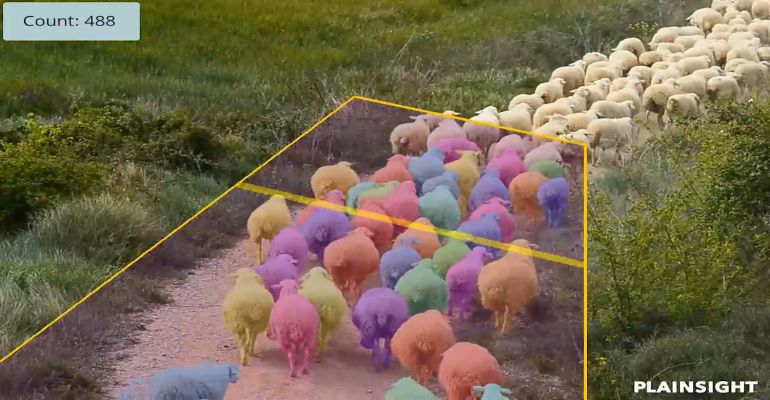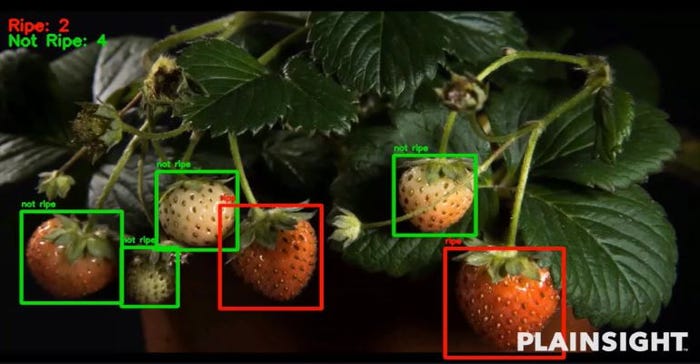With farms under pressure to produce more with less, AI has become part of the high technology boost farmers are using to automate tedious tasks while providing invaluable analytics data.

The image of farming has been rapidly transforming from one horse-drawn plows to high-tech equipment that can precisely and accurate perform agricultural tasks. Part of that transition is due to advanced software running machines, and artificial intelligence is now playing a key role.
For Plainsight, agriculture proved to be a formidable but not insurmountable challenge for the AI vision software supplier, which provides AI vision software solutions serving numerous industries.
“Agriculture is one of the most important parts of the economy,” said Logan Spears, Chief Technical Officer of Plainsight, in a recent interview with Design News. “Feeding everyone is not easy.”
Dealing With Mother Nature
Unlike the controlled conditions in, for example, a factory, agricultural applications are largely outdoors and subject to variables such as rain, wind, dust, and temperature extremes, which in turn requires the AI vision software to deal with additional parameters.
“Agriculture requires more data and streaming to produce operational flows to deal with natural conditions,” said Spears.
Asides from climatic conditions, the biological challenges of dealing with live animals and plants add to the plate of variables the AI vision software must deal with.
“For instance, the vision software has to deal with counting cows, some of whom don’t move when famers issue commands.” For livestock, the AI software monitors transport and on and off loading, while automating animal detection and livestock accounts across multiple locations.
Plainsight designed its vision AI algorithms to deal with variable light conditions ranging from visible o infrared, which helps in agricultural applications.
“In the infrared range, you can tell if fruits and vegetables are bruised. Spears said. The software can inspect and measure levels/grades of vision-derivable characteristics including, size, shape, firmness color, and overall condition.

Optimizing Crop Breeding
The AI vision software also monitors variations to determine seasonal, environmental, varietal, or management factors. It can also assist genetic selection for high quality & longer shelf life. “If you broaden the spectrum of use cases, you could do research on crop breeding under controlled conditions,” Spears added.
For crop management, the AI vision software gauges crop health and productivity, automates early detection, and measures plant stress, disease, and damage. It can also identify weeds, invasive species, and pests.
Besides eliminating the inaccuracies of manual counting, Plainsight’s AI vision software platform offers a dashboard that collects visual data across locations and allows sharing of insights. The platform also creates auditable records for process and regulatory compliance.
Spears believes AI will in the future move towards 3D scanning with drones to provide even more coverage. He also expects AI to be able to help farmers optimize agricultural planning decisions, such as what and when to plant.
Spencer Chin is a Senior Editor for Design News covering the electronics beat. He has many years of experience covering developments in components, semiconductors, subsystems, power, and other facets of electronics from both a business/supply-chain and technology perspective. He can be reached at [email protected].
About the Author(s)
You May Also Like





